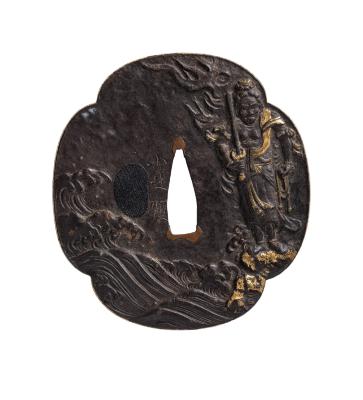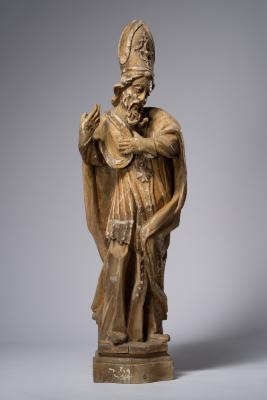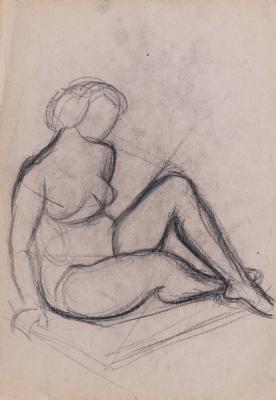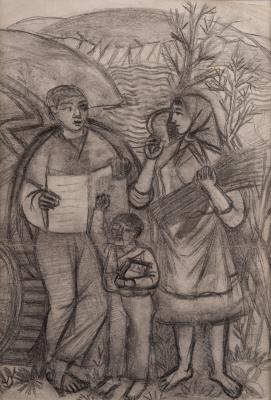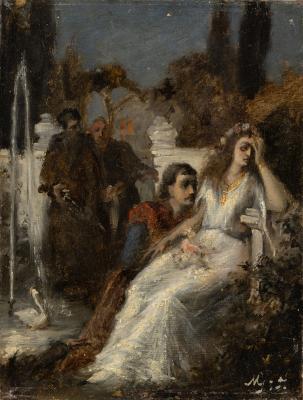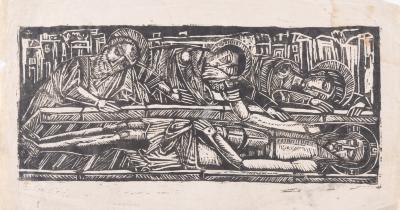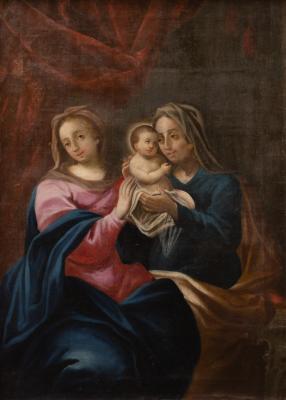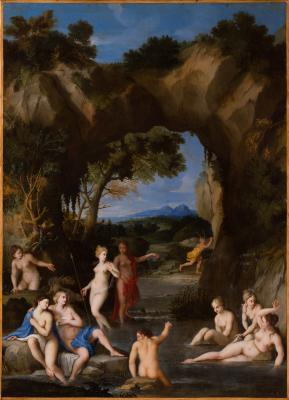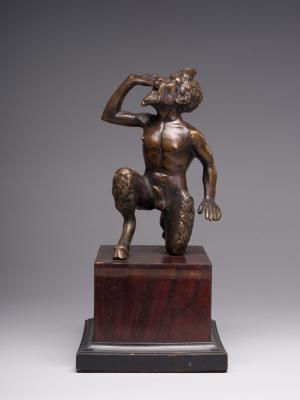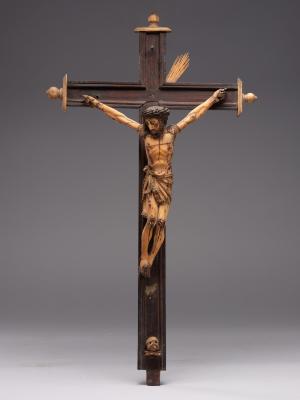There are two versions of this composition by B. Pinelli dating back to 1809 and 1815–1816. In the first version, which the artist performed for the album Raccolta di Cinquanta Costumi Pittoreschi (Collection of Fifty Picturesque Costumes), the child is depicted to the left of a woman sitting on a stone. The child is shown on the right in the second version, known from the album Nuova Raccolta di Cinquanta Costumi Pittoreschi (New Collection of Fifty Picturesque Costumes). The Lviv version replicates the second composition. A woman is dressed in the national costume of the Abruzzo region, in particular in a blue jacket, a long burgundy skirt with an ornamented apron over it, a traditional headscarf, and light, blue shoes. She is leaning on a basket on a high boulder under a rocky slope. To the right of the woman, a child is pointing at a traveller coming from the right. This is a young man, a seller of milk cheese (gioncata or giuncata), with a basket on a stick-lever over his shoulder and with a pot. The young man is dressed in a jacket and blue pants, with high ciocia on his feet. He has a dark hat on his head. In 1810, the album Nuova Raccolta di Cinquanta Motivi Pittoreschi, e Costumi di Roma, with the works by Bartolomeo Pinelli, was published in Rome. The gioncata seller was represented separately on page № 28 of the album.
Gioncata, or giuncata, is a traditional soft milk cheese drained as a liquid before consumption. The name comes from the basket made of cane (Italian: giunco), in which this cheese is formed.






